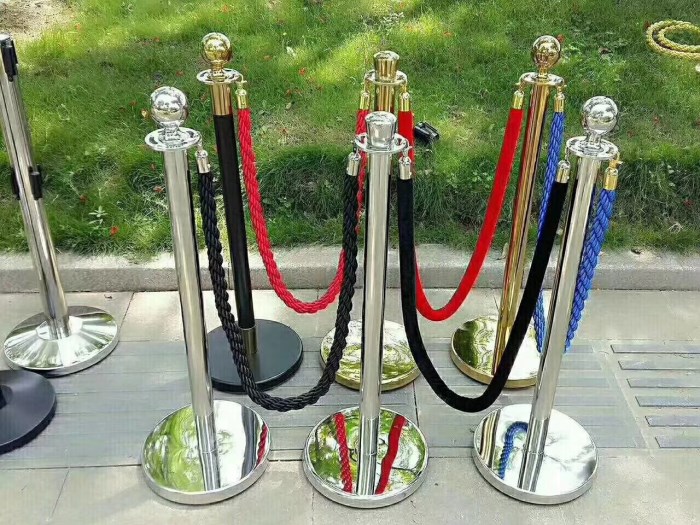Guangdong Shining Hotel Articles Co.,Ltd.
One of the large-scaled professional manufacturers
specialized in the hotel suppliers in China.
- All
- Product Name
- Product Keyword
- Product Model
- Product Summary
- Product Description
- Multi Field Search
Views: 0 Author: Site Editor Publish Time: 2024-02-14 Origin: Site









In today's bustling shopping environments, the art of managing foot traffic and enhancing customer experiences is paramount. The strategic use of crowd control stanchions plays a pivotal role in achieving this, providing a seamless flow of movement and ensuring safety for all. This comprehensive guide delves into the innovative stanchion tactics that malls can adopt to elevate the shopping experience.
Crowd control stanchions are not merely tools for guiding people; they are essential components in crafting a pleasant and efficient shopping environment. Their versatility allows malls to manage large crowds effectively, especially during peak hours or special events. By strategically placing these stanchions, malls can minimize congestion and maximize customer satisfaction.
Understanding human behavior and psychology is crucial in effective crowd management. Shoppers tend to follow visual cues and predefined paths. Implementing crowd control stanchions that guide them intuitively can significantly improve the overall flow within a mall, reducing stress and enhancing the shopping experience.
Various types of stanchions cater to different needs, from retractable belt models for quick adjustments to more permanent solutions like post and rope systems. Each type has its specific application, whether it's for queue management, area demarcation, or directing foot traffic efficiently.
Adopting a strategic approach to placing crowd control stanchions can transform how customers navigate through a mall. It’s about creating an intuitive journey that feels natural yet is meticulously planned to enhance efficiency and safety.
The placement of stanchions should be done with the goal of optimizing customer flow. This involves analyzing foot traffic patterns and identifying bottlenecks. By doing so, malls can strategically place stanchions to create smoother pathways and reduce areas of congestion.
Incorporating technology with traditional stanchion systems can offer real-time insights into crowd dynamics. Sensors and AI-powered analytics can help malls adjust their strategies on the fly, ensuring optimal crowd management at all times.
The implementation of well-thought-out stanchion tactics goes beyond mere crowd control; it significantly enhances the shopping experience by making it safer, more enjoyable, and efficient.
One of the primary benefits of effective stanchion use is improved safety. By guiding crowds smoothly and preventing overcrowding, malls can significantly reduce the risk of accidents or incidents.
A well-organized mall environment, facilitated by strategic stanchion placement, greatly contributes to customer satisfaction. Shoppers appreciate an environment where movement is effortless, enabling them to focus on their shopping experience without being hindered by chaos or confusion.
Drawing inspiration from successful implementations of crowd control strategies provides valuable insights into how malls can harness the power of stanchions effectively.
Highlighting case studies from leading malls that have innovatively used stanchions can serve as inspiration. From deploying mobile app integrations to dynamic placement techniques based on real-time data, these success stories showcase the potential of well-executed stanchion tactics.
The positive correlation between effective crowd management and retail performance cannot be overstated. Case studies demonstrate how malls with superior movement strategies see increased dwell times, higher spending per visit, and overall improved customer loyalty.
In conclusion, mastering mall movement through strategic use of crowd control stanchions is essential in today's competitive retail landscape. By understanding their role, implementing innovative tactics, and learning from successful cases, malls can significantly enhance shopper experiences while boosting safety and efficiency. The future of mall design lies in smartly integrating such strategies to create environments where shoppers feel valued and retailers thrive.